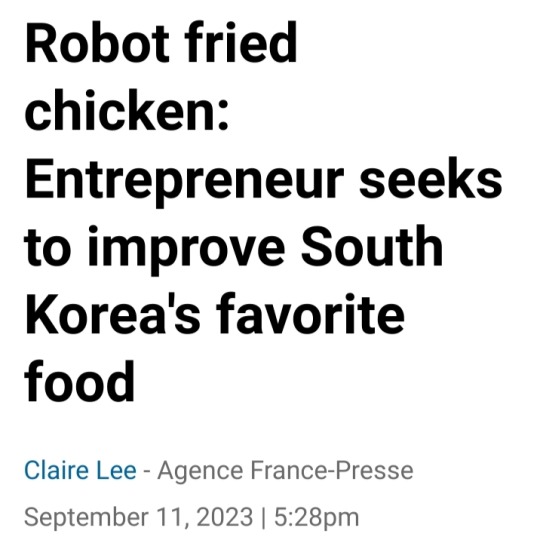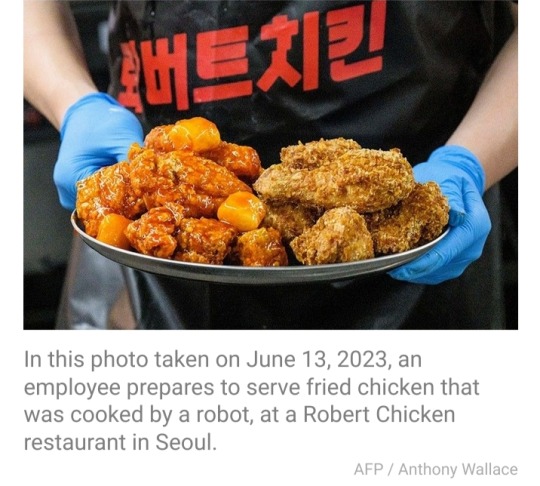#Smart Robots Market Report
Explore tagged Tumblr posts
Text
0 notes
Text
Europe Robotic Smart Motors Market (2023-2033) | Industry Research Analysis by BIS Research

The European region is witnessing a transformative shift in the adoption of robotic smart motors, revolutionizing various industries with their advanced capabilities. These motors are equipped with intelligent features such as connectivity, sensing, and control, enabling enhanced precision, efficiency, and versatility in robotic applications.
Understanding Robotic Smart Motors
Robotic smart motors are an integral component of robotic systems, providing the necessary power and control for robotic movements and functions. These motors are designed with built-in intelligence, enabling them to communicate, analyze data, and adapt to changing conditions in real-time. Robotic smart motors offer benefits such as improved accuracy, energy efficiency, reduced maintenance, and seamless integration into robotic systems, making them an essential technology for various industries.
The Europe Robotic Smart Motors Market is estimated to reach $2.36 billion by 2033 from $1.34 billion in 2022, at a growth rate of 5.41% during the forecast period 2023-2033. The European market for robotic smart motors has grown significantly in recent years, owing to technological improvements and rising demand for automation in a variety of industries.
Market Trends and Insights
Rapid Industrial Automation: The European region has been actively adopting industrial automation across sectors such as manufacturing, automotive, healthcare, and logistics. Robotic smart motors play a vital role in this automation wave, enabling precise and efficient control of robotic arms, grippers, conveyor systems, and other robotic components. The integration of smart motors enhances productivity, reduces downtime, and optimizes resource utilization, contributing to the growth of the European robotics industry.
Advancements in Connectivity and Control: Connectivity is a key feature of robotic smart motors, allowing them to interact with other devices and systems, enabling seamless integration within the Internet of Things (IoT) ecosystem. These motors can communicate with sensors, controllers, and cloud platforms, facilitating real-time data exchange and analysis. This connectivity enhances the capabilities of robotic systems, enabling predictive maintenance, remote monitoring, and intelligent decision-making.
Request a Free Detailed Sample Report on Europe Robotic Smart Motors Market Research.
Focus on Energy Efficiency: Energy efficiency is a significant consideration in the European region, driven by sustainability goals and the need to reduce operational costs. Robotic smart motors are designed to optimize energy consumption, utilizing advanced control algorithms and power management features. By minimizing power wastage and adjusting motor performance according to the task requirements, smart motors contribute to energy savings and environmental sustainability.
Collaborative Robotics: Collaborative robots, or cobots, are gaining prominence in Europe as they work alongside human operators, assisting in various tasks. Robotic smart motors equipped with safety features enable safe human-robot collaboration by ensuring the detection and avoidance of collisions. The adoption of cobots enhances productivity, improves ergonomics, and supports a flexible and agile work environment.
Future Outlook and Opportunities
The Europe Robotic Smart Motors Industry is poised for substantial growth from 2023 to 2033. The increasing demand for automation, advancements in connectivity and control, and the focus on energy efficiency are key drivers of market expansion. Additionally, collaborative robotics and the integration of smart motors in emerging sectors such as healthcare, agriculture, retail, and robotics and automation are expected to further propel market growth.
Conclusion
The Europe Robotic Smart Motors Industry is on a trajectory of significant growth, driven by the rapid adoption of industrial automation and advancements in connectivity and control. Robotic smart motors empower industries with enhanced precision, efficiency, and flexibility, enabling them to achieve higher productivity and cost savings. As Europe embraces the potential of smart motor technology, it is set to reshape various sectors and unlock new opportunities for innovation and competitiveness.
#Europe Robotic Smart Motors Market#Europe Robotic Smart Motors Market Report#Europe Robotic Smart Motors Industry#BIS Research
1 note
·
View note
Text
The Europe robotic smart motors market is estimated to reach $2.36 billion by 2033 from $1.34 billion in 2022, at a growth rate of 5.41% during the forecast period 2023-2033. The European market for robotic smart motors has seen a remarkable surge in recent years, driven by technological advancements and a growing demand for automation across various industries. This uptick in demand spans diverse sectors like automotive manufacturing, healthcare, logistics, and even everyday living.
#Europe Robotic Smart Motors Market#Europe Robotic Smart Motors Report#Europe Robotic Smart Motors Industry#Robotics and Automation#BISResearch
0 notes
Text
Build-A-Boyfriend Chapter 1: Deviation Detected




The way i wrote this with the quickness... was very excited I guess........
->Starring: AI!AteezxAfab!Reader ->Genre: Dystopian idk pls help ->CW: none
Next Part
Masterlist | Ateez Masterlist | Series Masterlist

The screen flickers to life, casting a sterile blue glow across the high-glass boardroom. A chime sounds. The synth music is soft, warm, unnaturally comforting.
“In a perfect world… who says you have to be alone?”
[Scene: golden morning light streams through a smart-home window. A woman sips tea as a tall, smiling man ties her apron for her. Cut to holographic customization panels, fingers sliding across facial presets, hair types, emotional spectrums. A glossy chrome heart pulses as code flows behind it.]
“Introducing Build-A-Boyfriend™, a revolutionary experience by KQ Inc., the world’s leading innovator in emotional robotics. Whether you’re looking for loyalty, laughter, protection, or passion — we’ve engineered the perfect companion, from his cheekbones to his charm.”
“Over 100 hairstyles. 20 hair colors. Hundreds of adjustable features: emotional intelligence, love languages,
conflict styles. Everything is customizable. Everything is yours.”
“Build trust. Build comfort. Build connection.”
[The KQ logo glows softly: a platinum rose blooming from circuitry.]
Build-A-Boyfriend™
Grand Opening — November 17, 3258 — Hala City
The video faded into silence. Then the lights returned, crisp, clinical, bright.
At the head of the table stood Chairwoman Vira Yun, CEO of KQ Inc. Her expression remained unreadable, but her eyes gleamed, the kind of gleam found in calculated ambition, not excitement.
She turned to face the table of top engineers, market strategists, and high-clearance developers.
“Thoughts?” she asked, her tone brisk. “Feedback. Questions. Concerns. Suggestions.”
A silence followed, not out of fear, not exactly, but out of discipline. KQ Inc. didn’t reward enthusiasm. It rewarded precision.
Finally, a market rep near the center offered, “The tone tests well in demos. Emotionally aspirational, but still sterilized enough to fit city guidelines.”
“The language?” Yun asked.
“Romantic but controlled,” another replied. “'Ownership' is implied without being direct. Citizens won’t be alarmed.”
“Excellent,” Yun said with a curt nod. “Then we proceed as planned. Hala City's flagship store opens November 17th. Media campaign rollout begins in three days.”
She paused, her gaze sharpening.
“The special line will not be mentioned until one week after launch. Is that understood?”
A few heads nodded. Only a handful at the table even knew what that “special line” truly entailed. Yn was one of them.
She sat toward the far end of the table, posture poised, eyes tired. Her tablet rested on her lap, screen dimmed, but behind the sleep mode glowed a list of internal reports tagged:
ATEEZ-BETA UNITS: BEHAVIOR DEVIATIONS – OBSERVATION LOGS PENDING
Yn said nothing.
There were already signs the line was unstable. Minor things: timing issues in reaction sequences, spontaneous micro-expressions, strange audio interference. Nothing outside protocol, not yet. Nothing that couldn’t be debugged.

Hala City was the Matriarchy’s masterpiece, a glass-and-steel paradise built after the Fall, when nature reclaimed the earth and humankind rebuilt without the burden of chaos.
The male species was gone — extinct from war, plague, or something worse. The truth was debated in underground circles, but the government insisted: peace was found through elimination.
The Supreme Matrons ruled with quiet efficiency. Reproduction was artificial. Emotional regulation was enforced. Love — in its unpredictable, biological form, was discouraged as outdated.
Children were raised by state guardians. Affection was simulated and scheduled. Bonds were monitored through neural metrics and performance reviews.
In that vacuum, KQ Inc. thrived.
They created companions for the emotionally delicate. Tutors for the socially underdeveloped. Grief simulations for those who had lost what the government refused to acknowledge.
Build-A-Boyfriend™ was simply the next logical step.

The meeting ended, the room emptied — chairs tucked in without a sound, tablets tucked under arms, footsteps softened by KQ’s luxury anti-clatter flooring.
Yn lingered a moment longer, tablet resting against her chest, fingers tense.
Then she slipped out of her seat, crossed the vast corridor of frosted glass and synthetic sunlight, and pressed her palm to the exit panel. The doors whispered open, exhaling a puff of sterilized air, and she stepped outside into the city.
Outside the glass wall that stretched from floor to ceiling, the city pulsed in clean, geometric order. Silver transport rails carved silently through the skyline. Light panels glowed in a muted spectrum, perfectly synchronized to the day’s emotional calibration code. Every color, every sound, every rhythm was regulated, each calculated to keep citizens at a precise emotional neutrality.
Stability. Efficiency. Harmony.
Those were Hala’s sacred values. Engraved into the entrance of every government building, stitched into every school uniform.
Hala City had no military, no prisons, no religion. The old world’s chaos had been scrubbed from its bones. Instead, there were wellness assessments, emotional correction centers, and State Therapeutic Companions — androids assigned to citizens whose neural scans showed spikes in sentiment, unpredictability, or unresolved grief.
It had been 149 years since The Great Reset, when the last male died and the Matriarchy took hold. Whether extinction was natural or engineered no longer mattered, the Supreme Matrons had rewritten history to begin after.
The world before was called The Collapse Era. Now, the world simply was.
From childhood, every citizen of Hala was raised by assigned maternal figures, rotations of calm, trained nurturers programmed to teach logic, order, and controlled affection.
Love, in the romantic sense, was considered a chemical imbalance. Desire was tolerated only in controlled expressions — within VR therapy suites or government-regulated media.
To crave more was a sign of dysfunction. To want more? Dangerous.
But over time, cracks began to show.
The rise of emotional dependency disorders — the ache for connection that no algorithm could suppress. The quiet epidemic of phantom longing. Citizens reporting dreams they weren’t supposed to have. Feelings they couldn’t place. Names they didn’t know how they knew.
KQ Inc. had the answer: give them what they wanted — but make it safe.
Build-A-Boyfriend™ wasn’t about love. It was about control. A need engineered, then sold. And the citizens of Hala were already lining up.

She turned down a quiet residential corridor — the one lined with mirrored trees and soft sky-glass tiles that absorbed her footsteps. Her apartment block loomed ahead, blinking her ID tag onto the entrance gate.
She glanced once at the skyline before entering — her eyes landing on the KQ Tower far in the distance, its dark silver peak glowing like a god in the clouds.
The door sealed shut behind her with a quiet hiss. Inside, her apartment was as minimal as the rest of Hala — soft lighting, neutral tones, minimalistic furniture, automated temperature preset to her emotional range for the day.
No clutter. No pictures. No history.
Yn set her tablet down on the charging dock near the entry shelf. The screen flickered to life automatically.
⚠️ ALERT: BEHAVIORAL DEVIATION DETECTED — ATEEZ UNIT 06 Timestamp: 19:04 | Lab 3A Observation Room Severity: Red Flagged: Autonomy Spike — Eye Tracking Outside Command
The warning blinked in silence.
Yn didn’t see it. She had already sunk into the corner of her sofa, head tilted back, eyes closed, letting the hum of her apartment’s emotional regulation system blur the sharpness of her thoughts.
She didn’t see the screen pulse again.
⚠️ Second Deviation Logged. Timestamp: 19:10 | Lab 3A Observation Room Severity: Red Flagged: Autonomy Spike —ATEEZ UNIT 06 SPOKE WITHOUT PROMPT. Transcription Pending... “YN"
The screen dimmed. The room fell silent. And somewhere, deep below the city, something smiled.

Taglist: @e3ellie @yoongisgirl69 @jonghoslilstar @sugakooie @atztrsr
@honsans-atiny-24 @life-is-a-game-of-thrones @atzlordz @melanated-writersblock @hwasbabygirl
@sunnysidesins @felixs-voice-makes-me-wanna @seonghwaswifeuuuu @lezleeferguson-120 @mentalnerdgasms
@violatedvibrators @krystalcat @lover-ofallthingspretty @londonbridges01
If you would like to be a part of the taglist please fill out this form
#ateez#ateez park seonghwa#ateez kim hongjoong#ateez jeong yunho#ateez song mingi#ateez yeosang#park seonghwa#ateez choi jongho#ateez x reader#ateez yunho#hongjoong ateez#seonghwa x reader#seonghwa#ateez fanfic#atz#yunho x reader#jeong yunho#choi jongho#jongho#san#wooyoung#yeosang#yunho#song mingi x reader#song mingi#song mingi ateez#wooyoung x reader#jung wooyoung#kang yeosang#yeosang x reader
104 notes
·
View notes
Text
Tony is not a businessman
Crazy opinion, some might say. But I know what I'm talking about. Let me show you.
Here's a hypothesis: Tony was never interested in becoming CEO of SI or any other company. Never wanted to do business for life. Was not interested in what's going on in his company before Afghanistan. And never even learned how to run it.
Let's check the facts we have:
Before becoming CEO, Tony spent his entire life as a student. He had degrees in science and engineering. Nothing close to business. No MBA, no economics, no management. His interest was focused on robotics and AI. Before his parents died, he had no experience running a company or working in business. I'm sure his father gave him some business training. Including, of course, how to behave in public so as not to be eaten by sharks. But that's it. He never showed or mentioned any interest in business.

He was not interested in expanding his company or making more money. He stopped at $10-20 billion. Never earned more, but could. Reminder from this post about the net worth of real billionaires: Elon Musk - $210 billions, Jeff Bezos - $195 billions, Bill Gates - $129 billions. Huge difference. And they are not even as brilliant as he is.
He also didn't try to buy and take over other companies.
He didn't really care about money. He stopped weapon manufacturing after returning from Afghanistan. He knew that SI could go bankrupt. Easily. But he did it anyway. He could have made a lot of enemies. Including politicians and military. He did it anyway.

He instructed Pepper not to do business with other companies working on anything that could be used as a weapon.


And this means fewer projects and contracts, less profit and influence on the market and many industries.
Have you ever seen him actually run SI independently? In IM1, he showed Jericho to officers in Afghanistan and reported back to Stane on how it went.

He wasn't even aware of the Board meeting.

He appointed Pepper as CEO. Yes, he thought he was going to die soon. But he never took it back. This gave him more freedom to do what he was most interested in and enjoyed doing - science and saving the world.
When he was appointing her in IM2, he said:


He thought. He didn't even know how the company's processes worked. Because he was not interested, and because Stane was doing business for him.

And Tony simply trusted him and the board of directors because they promised him they wouldn't do dirty business. That was the only thing that interested him back then.

That's why he had zero awareness of all the under-the-table deals Stane made behind his back. Because Tony never looked back. He trusted them. This trait will again hurt him greatly in the future.
We never saw him in his office (only when it became Pepper's office). He was always at home in his lab.

Every time Pepper or other people came to Tony with business matters, Tony tried to get rid of them (the matters and the people). To postpone, to ignore, to be late, intentionally or not. It was boring. He didn't like the people in business. He didn't respect them because he knew who they were. He didn't care about their recognition. He was making more room in his busy schedule to spend time at home, doing science and tinkering.

Conclusion: Tony was never really the CEO of SI. He was its R&D Department.

He was never a businessman, but had to pretend to be one. He was not a businessman not because he was incapable or lazy. He was smart enough to do the job. It just wasn't his thing. He was glad to get rid of this obligation as soon as possible. After 20 years of living a life he never wanted, it certainly felt great being someone closer to himself.

P.S. Happy non-CEO 1602 Tony says Hi from his science barn (he also knows the local Robin Hood, but shh...).

#marvel#mcu#tony stark#iron man#the avengers#iron man 3#iron man 2#pepper potts#obadiah stane#business#stark industries#what if
71 notes
·
View notes
Text
An Overview of UK Home Small Domestic Appliances Market: Trends and Insights
The UK home small domestic appliances (SDA) market has seen significant growth driven by evolving consumer lifestyles, technological innovations, and a growing focus on energy efficiency and sustainability. From kettles and toasters to handheld vacuums and smart kitchen gadgets, SDAs are becoming indispensable in UK households.

Buy the Full Report for More Category Insights into the UK Home Small Domestic Appliances Market
Download a Free Sample Report
Here’s an analysis of the key trends and insights shaping the market in 2024.
1. Market Size and Growth
The SDA market in the UK is expected to grow at a CAGR of 4-6% from 2023 to 2028, driven by post-pandemic shifts in home-based lifestyles.
Rising disposable income and increasing interest in premium and smart appliances are fueling demand.
2. Key Consumer Trends
a. Smart and Connected Appliances
Voice control integration (via Alexa, Google Assistant) and IoT-enabled SDAs are gaining traction.
Popular products: Smart kettles, Wi-Fi-enabled coffee makers, and robotic vacuum cleaners.
b. Health and Wellness Focus
Growing interest in air fryers, blenders, and juicers as consumers focus on healthier lifestyles.
Increased demand for air purifiers and humidifiers due to rising concerns over indoor air quality.
c. Sustainability and Energy Efficiency
UK consumers are prioritizing eco-friendly appliances with lower energy consumption, such as energy-efficient kettles and low-wattage irons.
Brands offering repairable and recyclable products are seeing stronger loyalty.
d. Compact and Space-Saving Designs
Urban living and smaller households drive demand for multi-functional and compact SDAs, such as 2-in-1 steamers or combination microwaves.
3. Product-Specific Insights
Kitchen Appliances
Coffee Machines:
Premium brands like Nespresso and De’Longhi dominate, with demand for bean-to-cup and pod-based machines increasing.
Air Fryers:
Brands like Tefal and Ninja lead as air fryers become a household staple.
Consumers prioritize larger capacities and multi-functionality.
Cleaning Appliances
Robotic Vacuum Cleaners:
Growing adoption of smart robotic vacuums from brands like iRobot and Eufy.
Consumers value mapping technologies and self-emptying features.
Handheld Vacuums:
Brands like Dyson continue to dominate the cordless vacuum segment, driven by innovations in battery life and suction power.
Personal Care Appliances
Growth in electric toothbrushes, hair dryers, and grooming kits, driven by brand diversification and targeted marketing.
4. Retail and Distribution Trends
E-commerce Boom:
Online channels like Amazon, Argos, and Currys are witnessing robust growth, fueled by convenience and competitive pricing.
Omni-Channel Experiences:
Retailers are integrating digital and in-store experiences, such as AR demos for products.
Subscription Models:
Brands offering subscription plans for products like coffee machines and vacuum filters are seeing higher customer retention.
5. Competitive Landscape
Key Players
Dyson:
Leader in cordless vacuum and air purifier segments, with a focus on cutting-edge design and functionality.
Ninja:
Dominates the air fryer market and continues to expand into other SDAs like blenders and multi-cookers.
Philips:
Strong presence in personal care and kitchen appliances, with a growing focus on energy efficiency.
Breville:
Known for kettles, toasters, and sandwich makers, with a strong mid-market appeal.
Market Share Dynamics
Premium brands like Dyson and Nespresso dominate the high-end segment.
Mid-range brands (e.g., Tefal, Morphy Richards) maintain steady growth by balancing affordability and quality.
New entrants offering smart or niche eco-friendly solutions are gradually gaining market share.
6. Challenges and Opportunities
Challenges
Economic Pressures:
Inflation and rising energy costs may deter discretionary spending on premium SDAs.
Supply Chain Disruptions:
Component shortages and logistical issues continue to affect manufacturing and delivery timelines.
Opportunities
Sustainability:
Brands investing in energy-efficient and recyclable products are likely to capture eco-conscious consumers.
Customization:
Offering customizable products (e.g., personalized coffee settings or modular vacuum components) can differentiate brands.
7. Future Outlook
Smart Home Integration:
Growth in smart home adoption will drive demand for IoT-enabled SDAs.
Health and Wellness Products:
Continued interest in products supporting healthy lifestyles, such as air purifiers and low-fat cooking appliances.
Sustainability Leadership:
Companies embracing circular economy principles will gain a competitive edge.
The UK small domestic appliances market is poised for steady growth, underpinned by consumer preferences for convenience, sustainability, and technology-driven innovation. Players who align their strategies with these evolving trends will be best positioned to thrive.
2 notes
·
View notes
Text


SEOUL, South Korea — In fried-chicken-obsessed South Korea, restaurants serving the nation's favourite fast-food dish dot every street corner.
But Kang Ji-young's establishment brings something a little different to the table: a robot is cooking the chicken.
Eaten at everything from tiny family gatherings to a 10-million-viewer live-streamed "mukbang" -- eating broadcast -- by K-pop star Jungkook of BTS fame, fried chicken is deeply embedded in South Korean culture.
Paired with cold lager and known as "chimaek" -- a portmanteau of the Korean words for chicken and beer -- it is a staple of Seoul's famed baseball-watching experience.
The domestic market -- the world's third largest, after the United States and China -- is worth about seven trillion won ($5.3 billion).
However, labour shortages are starting to bite as South Korea faces a looming demographic disaster due to having the world's lowest birth rate.
Around 54 percent of business owners in the food service sector report problems finding employees, a government survey last year found, with long hours and stressful conditions the likely culprit, according to industry research.
Korean fried chicken is brined and double-fried, which gives it its signature crispy exterior, but the process -- more elaborate than what is typically used by US fast food chains -- creates additional labour and requires extended worker proximity to hot oil.
Enter Kang, a 38-year-old entrepreneur who saw an opportunity to improve the South Korean fried chicken business model and the dish itself.
"The market is huge," Kang told AFP at her Robert Chicken franchise.
Chicken and pork cutlets are the most popular delivery orders in South Korea, and the industry could clearly benefit from more automation "to effectively address labour costs and workforce shortages," she said.
Kang's robot, composed of a simple, flexible mechanical arm, is capable of frying 100 chickens in two hours -- a task that would require around five people and several deep fryers.
But not only does the robot make chicken more efficiently -- it makes it more delicious, says Kang.
"We can now say with confidence that our robot fries better than human beings do," she said.

Investing in 'foodtech'
Already a global cultural powerhouse and major semiconductor exporter, South Korea last year announced plans to plough millions of dollars into a "foodtech" fund to help startups working on high-tech food industry solutions.
Seoul says such innovations could become a "new growth engine," arguing there is huge potential if the country's prowess in advanced robotics and AI technology could be combined with the competitiveness of Korean food classics like kimchi.
South Korea's existing foodtech industry -- including everything from next-day grocery delivery app Market Kurly to AI smart kitchens to a "vegan egg" startup -- is already worth millions, said food science professor Lee Ki-won at Seoul National University.
Even South Korea's Samsung Electronics -- one of the world's biggest tech companies -- is trying to get in on the action, recently launching Samsung Food, an AI-personalised recipe and meal-planning platform, available in eight languages.
Lee predicted South Korea's other major conglomerates are likely to follow Samsung into foodtech.
"Delivering food using electric vehicles or having robots directly provide deliveries within apartment complexes, known as 'metamobility,' could become a part of our daily lives," he said.
"I am confident that within the next 10 years, the food tech industry will transform into the leading sector in South Korea."

'Initially struggled'
Entrepreneur Kang now has 15 robot-made chicken restaurants in South Korea and one branch in Singapore.
During AFP's visit to a Seoul branch, a robot meticulously handled the frying process -- from immersing chicken in oil, flipping it for even cooking, to retrieving it at the perfect level of crispiness, as the irresistible scent of crunchy chicken wafted through the shop.
Many customers remained oblivious to the hard-working robotic cook behind their meal.
Kim Moon-jung, a 54-year-old insurance worker, said she was not sure how a robot would make the chicken differently from a human "but one thing is certain -- it tastes delicious."
The robot can monitor oil temperature and oxidation levels in real time while it fries chicken, ensuring consistent taste and superior hygiene.
When Kang first started her business, she "initially struggled" to see why anyone would use robots rather than human chefs.
"But after developing these technologies, I've come to realise that from a customer's perspective, they're able to enjoy food that is not only cleaner but also tastier," she told AFP.
Her next venture is a tip-free bar in Koreatown in New York City, where the cocktails will feature Korea's soju rice wine and will be made by robots.
youtube
Entrepreneur aims to improve South Korea's dish using robot
11 September 2023
#South Korea#chimaek#fried chicken#beer#Korean fried chicken#Robert Chicken#Kang Ji-young#advanced robotics#AI technology#Samsung Food#Samsung Electronics#metamobility#Youtube#robot
9 notes
·
View notes
Text
Artificial Intelligence Developers: Driving the Future of Intelligent Technology
In the fast-evolving world of technology, artificial intelligence developers have become some of the most valuable professionals in the industry. These experts are responsible for designing intelligent machines and systems that simulate human thinking. As AI becomes deeply embedded in our daily lives—from virtual assistants to self-driving cars—the role of artificial intelligence developers continues to expand.
Who Are Artificial Intelligence Developers?
Artificial intelligence developers are specialized software engineers who focus on building applications powered by machine learning, natural language processing, computer vision, and other AI technologies. They create algorithms that help machines make decisions, learn from data, and solve complex problems efficiently.
Unlike traditional developers, AI developers must blend knowledge from computer science, data science, and mathematics to build systems that can learn and adapt over time.
Core Responsibilities of AI Developers
Artificial intelligence developers handle a wide range of tasks, including:
Designing and implementing AI and machine learning models.
Preprocessing and analyzing large datasets.
Training and evaluating models using statistical techniques.
Building intelligent applications for speech recognition, recommendation systems, predictive analytics, and more.
Collaborating with data scientists, engineers, and product teams to integrate AI solutions into products.
Deploying AI models to production and monitoring their performance.
Key Skills Required for AI Developers
To thrive in the field, artificial intelligence developers must possess a unique blend of technical and analytical skills:
Programming Expertise: Proficiency in Python, R, Java, or C++.
Mathematical Foundation: Strong grasp of algebra, calculus, probability, and statistics.
Familiarity with AI Tools & Frameworks: TensorFlow, PyTorch, Keras, OpenCV, Scikit-learn.
Data Management Skills: Experience with SQL, NoSQL databases, and big data technologies like Spark.
Problem-Solving Abilities: Ability to tackle complex real-world problems through innovative AI solutions.
Knowledge of Cloud Platforms: AWS, Google Cloud, or Azure for deploying scalable AI applications.
Industries Employing Artificial Intelligence Developers
The demand for AI developers is booming across multiple industries:
Healthcare: AI for diagnostics, drug discovery, and robotic surgeries.
Finance: Fraud detection, credit scoring, and algorithmic trading.
E-commerce: Personalized recommendations, customer behavior prediction, and chatbots.
Automotive: Development of autonomous vehicles and smart navigation systems.
Marketing: Predictive analytics and automated content generation.
Career Growth and Opportunities
As AI technology continues to evolve, artificial intelligence developers are at the forefront of innovation. With increasing investment in AI by both startups and large corporations, job opportunities in this field are growing rapidly. Roles like AI engineer, machine learning engineer, data scientist, and research scientist offer high salaries and long-term career prospects.
According to industry reports, AI-related job openings have increased by over 70% in the last few years, with salaries often exceeding six figures depending on experience and location.
Conclusion
Artificial intelligence developers are shaping the digital future by building smart systems that transform how we work, live, and interact. Their expertise is essential in unlocking the full potential of AI across industries. For those with a passion for problem-solving, coding, and innovation, a career as an AI developer offers not just exciting challenges but also the opportunity to make a significant impact on the world.
0 notes
Text
What digital marketing services does garage 2 global offer?

At Garage2Global, we don’t just offer digital marketing — we engineer it to launch your business from the garage to the globe. Whether you’re a startup with a vision or a brand ready to scale, we build strategies that drive real growth, not just vanity metrics.
These are the factors we work to make your website from garage 2 global
🔍 1. Search Engine Optimization (SEO)
We help you climb the Google ladder — one keyword at a time. Our SEO experts tailor on-page and off-page strategies that boost visibility, traffic, and trust. Think rankings that stick, not just spike.
💬 2. Social Media Marketing
From Instagram reels to LinkedIn leads — we craft content that connects and converts. We don’t just post; we build communities around your brand.
📢 3. Performance Marketing (PPC & Ads)
Every click counts. Our paid campaigns on Google, Meta, and beyond are data-driven, conversion-focused, and ROI-obsessed. No guesswork — just performance.
📩 4. Email Marketing
Smart sequences. Personal touches. Automated journeys. We help you turn cold leads into loyal customers with email flows that feel human, not robotic.
🛒 5. E-commerce Marketing
From abandoned cart recovery to dynamic product ads, we tailor strategies that skyrocket your online store's sales — whether on Shopify, WooCommerce, or Amazon.
🖥️ 6. Website & Landing Page Optimization
It’s not just about looking good — it’s about converting. We create and optimize websites that load fast, tell your story, and drive action.
📊 7. Analytics & Growth Tracking
You’ll never fly blind. With transparent dashboards and insightful reporting, we track every click, view, and conversion — so you always know what’s working.
🎯 Why Choose Garage2Global?
Because we’re not a one-size-fits-all agency. We blend creativity with strategy, and data with storytelling. When we say “global,” we mean helping you compete, connect, and convert — worldwide.
Frequently Asked Questions (FAQs)
✅ 1. What makes Garage2Global different from other digital marketing agencies?
We blend strategic thinking with a startup mindset. Our approach is agile, transparent, and results-driven — perfect for businesses looking to scale fast with real ROI.
✅ 2. Do you work with all industries?
Absolutely. From tech startups to retail, hospitality to healthcare — our flexible strategies adapt to your niche and customer base.
✅ 3. Can I choose individual services, or do I need a full package?
You’re in control. We offer both à la carte services and end-to-end digital marketing solutions — tailored to your goals and budget.
✅ 4. How long before I see results?
It depends on the service. Paid ads show results fast, while SEO takes time but delivers long-term impact. We’ll set realistic timelines from day one.
✅ 5. Do you provide reporting and analytics?
Yes. You’ll get regular performance reports with actionable insights. Transparency is part of our promise.
✅ 6. How do we get started?
Simple! Book a free consultation with our strategy team. We’ll understand your business, goals, and create a custom plan that works for you.
Let’s turn your vision into visible results. 👉 Ready to go from Garage to Global?
visit https://garage2global.com/
0 notes
Text
Robotic Smart Motors Market to Reach $8.04 Billion at CAGR of 5.31% by 2033 | BIS Research

The Robotic Smart Motors Market stands at the forefront of technological innovation, driving advancements in robotics and automation. As artificial intelligence (AI) and machine learning (ML) progress, robotic systems integrated with smart motors demonstrate an ongoing enhancement in their capabilities.
Evolution of Robotic Smart Motors
Robotic smart motors represent a paradigm shift in the field of robotics, integrating intelligence, precision, and efficiency. These motors, equipped with advanced sensors and control systems, empower robots to perform tasks with unprecedented accuracy and responsiveness. As industries increasingly adopt automation, the demand for robotic smart motors is on the rise, reshaping the way machines operate.
The Robotic Smart Motors Market was valued at $4.61 billion in 2022 and is expected to reach $8.04 billion by 2033, growing at a CAGR of 5.31% between 2023 and 2033.
Industry Key Drivers of Market Growth
Industry 4.0 and Automation Trends: The advent of Industry 4.0, characterized by the integration of digital technologies into manufacturing processes, has spurred the demand for robotic smart motors. These motors play a pivotal role in the automation of tasks, enhancing productivity, and reducing manual intervention.
Efficiency and Precision: Robotic smart motors are engineered to deliver unparalleled efficiency and precision. With advanced control algorithms and real-time feedback from sensors, these motors enable robots to execute complex tasks with accuracy, making them indispensable in applications requiring intricate movements.
Emergence of Smart Factories: The concept of smart factories, characterized by interconnected and intelligent manufacturing systems, has propelled the demand for robotic smart motors. These motors contribute to the creation of agile and adaptive production environments, optimizing resource utilization and production efficiency.
Download our free Robotic Smart Motors Market Report for more detailed insights.
Robotic Smart Motors Industry Segmentation by Robot Type
Commercial
Industrial Robot
Service Robot
Medical Robot
Agricultural Robot
Inspection and Maintenance Robot
Defense
Unmanned Aerial Vehicle (UAV)
Unmanned Ground Vehicle (UGV)
Unmanned Maritime Vehicle (UMV)
Bomb Disposal Robot
Tactical Robot
Applications Across Industries
Manufacturing and Assembly: In manufacturing and assembly lines, robotic smart motors enable precise control over robotic arms and end-effectors. This application is crucial for tasks such as pick-and-place operations, welding, and assembly, contributing to streamlined production processes.
Healthcare and Medical Robotics: Robotic smart motors find applications in the healthcare sector, powering robotic surgical systems, rehabilitation devices, and diagnostic equipment. The precision and dexterity provided by these motors enhance the capabilities of medical robots, contributing to improved patient care.
Logistics and Warehousing: The logistics and warehousing industry benefits from robotic smart motors in autonomous guided vehicles (AGVs) and robotic pickers. These motors enhance the agility of robots in navigating warehouse spaces, picking and transporting goods efficiently.
Electronics and Semiconductor Manufacturing: In the electronics industry, where precision is paramount, robotic smart motors play a crucial role in the fabrication and assembly of electronic components. These motors contribute to the high-speed and precision required for semiconductor manufacturing.
Key Market Players in the Industry
The top established robotic smart motors providers hold around 79% of the presence in the market. The start-ups in the market hold around 21% as of 2022 of the global robotic smart motors industry.
ABB
Siemens
NIDEC Corporation
Yaskawa Electric Corporation
Moog Animatics
Rockwell Automation
Schneider Electric
Dunkermotoren GmbH
Future Prospects & Opportunities
As technology continues to advance, the future of the Robotic Smart Motors Industry holds exciting possibilities. Innovations in sensor technology, artificial intelligence, and connectivity are expected to further enhance the capabilities of these motors, opening up new frontiers in robotic applications.
Conclusion The Robotic Smart Motors Market signifies a transformative era in robotics and automation, redefining how machines operate and interact with their environment. With applications spanning across industries and a relentless pursuit of technological advancements, robotic smart motors are poised to be a driving force in the ongoing evolution of smart manufacturing and robotic solutions. As industries increasingly embrace robotics and automation, these intelligent motors will continue to be at the core of enhancing efficiency, precision, and adaptability in the world of robotics.
#Robotic Smart Motors Market#Robotic Smart Motors Report#Robotic Smart Motors Industry#Robotic Smart Motors Market Report#Robotic Smart Motors Market Size#Robotic Smart Motors Market Research#Robotic Smart Motors Market Forecast#Robotic Smart Motors Market CAGR#BIS Research
0 notes
Text
The global robotic smart motors market is estimated to reach $8.04 billion in 2033, at a growth rate of 5.31% during the forecast period 2023-2033.
One of the primary driving forces behind the market's expansion is the burgeoning demand for automation across diverse sectors
#Robotic Smart Motors Market#Robotic Smart Motors Report#Robotic Smart Motors Industry#Robotics and Atomation#Bisresearch
0 notes
Text
Electronics Go Dense, EMI Filters Grow Strong: Global Market Forecast to 2031

The global EMI filters market was valued at USD 274.5 Mn in 2022 and is projected to expand at a CAGR of 4.1% from 2023 to 2031, reaching USD 392.1 Mn by 2031. As industries worldwide move toward high-frequency operations and increasingly dense electronics ecosystems, electromagnetic interference (EMI) filters have become essential in ensuring signal integrity and operational stability across critical applications.
Market Overview: EMI filters play a vital role in safeguarding electronic devices and systems from the detrimental effects of electromagnetic interference. These filters block unwanted high-frequency signals while allowing desired currents to pass, thereby maintaining the reliability of mission-critical electronic equipment across industries such as telecommunications, automotive, aerospace, and consumer electronics.
As digital transformation accelerates across sectors, the complexity of electronic systems and their exposure to interference sources have surged, further boosting demand for sophisticated EMI filtering technologies.
Market Drivers & Trends
1. Surge in Electronic Device Usage: With growing adoption of smartphones, laptops, IoT devices, and wireless communication systems, the likelihood of EMI-related disruptions has increased. EMI filters ensure smooth functionality and extend the lifespan of sensitive electronic components.
2. Expansion of Telecommunication Networks: The rollout of 5G infrastructure, along with increasing data traffic and device density, has heightened the need for robust EMI solutions. Telecommunication operators are now heavily investing in high-performance EMI filters to maintain signal clarity and reduce latency.
3. Technological Advancements in Filter Design: The incorporation of AI in filter design enables the creation of optimized, application-specific EMI filters. These intelligent systems can model complex interactions and tailor filter responses accordingly, improving performance and reducing design time.
Latest Market Trends
Miniaturization and Integration: With device footprints shrinking, manufacturers are designing compact EMI filters that can be seamlessly integrated into PCBs and electronic systems.
RoHS-Compliant and Sustainable Filters: In response to global sustainability mandates, eco-friendly and RoHS-compliant EMI filters are gaining traction.
Application-Specific Customization: The market is seeing a shift toward customized EMI filter solutions to meet diverse needs across verticals such as electric vehicles (EVs), data centers, and smart homes.
Key Players and Industry Leaders
The EMI filters market features a moderately fragmented competitive landscape, with several key players vying for technological leadership. Prominent companies include:
Astrodyne TDI Corporation
Captor Corporation
CTS Corporation
EMI Solutions, Inc.
Exxelia Group
KEMET Corporation
Knowles Precision Devices, Inc.
KYOCERA AVX Components Corporation
Microwave Filter Company Inc.
Murata Manufacturing Co., Ltd
Oxley Group
Schaffner Holding AG
Spectrum Control Inc.
TDK Corporation
TE Connectivity Ltd.
Other Key Players
These companies focus on expanding product portfolios, developing application-specific solutions, and forming strategic alliances to consolidate their market positions.
Download now to explore primary insights from our Report in this sample - https://www.transparencymarketresearch.com/sample/sample.php?flag=S&rep_id=85982
Recent Developments
January 2024 – TDK Corporation launched the B84742AR725 series*, single-phase EMC/EMI filters for AC and DC applications, optimized for compactness and performance.
December 2022 – Astrodyne TDI introduced RP695H DC EMI filters to support high-performance EV fast-charging stations, aligning with the global shift toward sustainable transport.
June 2022 – Schaffner released the FN2500 / FN2640 EMC filter series, specifically designed for robotics and data center rack applications.
Market Opportunities
Rise in EV Penetration: As electric vehicles become mainstream, there is increasing demand for EMI filters that can operate in high-voltage environments and reduce noise in sensitive EV electronics.
Growth of Smart Cities and IoT: The proliferation of connected devices, sensors, and automation systems is creating new avenues for EMI filter deployment.
Defense and Aerospace Demand: Advanced electronic warfare systems, avionics, and radar technologies require highly reliable EMI shielding, creating robust demand in the defense sector.
Future Outlook
The EMI filters market is poised for steady and sustainable growth over the coming years. Emerging technologies such as 6G, AI-integrated systems, and high-speed edge computing will create intricate electronic environments that necessitate more advanced and adaptable EMI solutions. Manufacturers will continue investing in miniaturization, energy efficiency, and design automation to stay competitive.
Asia Pacific is expected to remain the market leader due to its thriving electronics manufacturing base and the ongoing deployment of next-gen telecom networks. Meanwhile, North America and Europe will benefit from rapid adoption of EVs, smart grids, and aerospace innovations.
Buy this Premium Research Report and gain expert perspectives and analysis -
Market Segmentation
By Type:
Band Pass Filters
High Pass Filters
Notch Filters
Low Pass Filters (leading segment)
By Filter Type:
LC
CL
T
Pi Filters (dominant due to impedance matching capabilities)
Others
By End-use Industry:
Consumer Electronics
Industrial
IT and Telecommunication
Aerospace and Defense
Automotive
Healthcare
Others
Regional Insights
Asia Pacific held a dominant market share of 38.8% in 2022, attributed to:
Booming electronics manufacturing in China, Japan, South Korea, and India
Growing investment in smart infrastructure, telecom networks, and defense
Rapid deployment of 5G and IoT devices
North America is also expected to witness significant growth, supported by:
Advanced aerospace and automotive sectors
Innovation in telecommunications and EV infrastructure
Europe continues to prioritize EMI compliance in industrial automation, while emerging economies in South America and the Middle East are gradually integrating EMI solutions as part of their digital transformation strategies.
Why Buy This Report?
Detailed market forecast and analysis through 2031
In-depth segmentation and cross-comparison across regions and industries
Profiles of key companies with strategic insights
Emerging opportunities and investment landscapes
Access to historical data and projections in PDF and Excel formats
Includes Porter’s Five Forces, Value Chain Analysis, and Key Trend Mapping
Frequently Asked Questions (FAQs)
Q1. What is the projected value of the EMI filters market by 2031? A: The EMI filters market is expected to reach US$ 392.1 Mn by 2031.
Q2. What is driving the EMI filters market growth? A: Growth is fueled by the expansion of 5G networks, increased usage of electronic devices, and rising adoption of electric vehicles.
Q3. Which region holds the largest market share? A: Asia Pacific, with 38.8% share in 2022, dominates the global market.
Q4. Which segment leads by filter type? A: The Pi filter segment leads due to its flexibility in impedance matching and high-frequency EMI suppression.
Q5. Who are the key players in this market? A: Leading players include TDK Corporation, Schaffner Holding AG, Astrodyne TDI Corporation, KYOCERA AVX, and Murata Manufacturing Co., Ltd.
Q6. Which end-use industry is seeing the highest EMI filter adoption? A: IT and Telecommunication, followed closely by Automotive and Consumer Electronics.
Explore Latest Research Reports by Transparency Market Research: High-Integrity Pressure Protection System (HIPPS) Market: https://www.transparencymarketresearch.com/high-integrity-pressure-protection-system-market.html
Piezoelectric Devices Market: https://www.transparencymarketresearch.com/piezoelectric-device-market.html
Energy Harvesting for Small Sensors Market: https://www.transparencymarketresearch.com/energy-harvesting-for-small-sensors-market.html
Gas Sensors Market: https://www.transparencymarketresearch.com/gas-sensors-market.html
About Transparency Market Research Transparency Market Research, a global market research company registered at Wilmington, Delaware, United States, provides custom research and consulting services. Our exclusive blend of quantitative forecasting and trends analysis provides forward-looking insights for thousands of decision makers. Our experienced team of Analysts, Researchers, and Consultants use proprietary data sources and various tools & techniques to gather and analyses information. Our data repository is continuously updated and revised by a team of research experts, so that it always reflects the latest trends and information. With a broad research and analysis capability, Transparency Market Research employs rigorous primary and secondary research techniques in developing distinctive data sets and research material for business reports. Contact: Transparency Market Research Inc. CORPORATE HEADQUARTER DOWNTOWN, 1000 N. West Street, Suite 1200, Wilmington, Delaware 19801 USA Tel: +1-518-618-1030 USA - Canada Toll Free: 866-552-3453 Website: https://www.transparencymarketresearch.com Email: [email protected]
0 notes
Text
Trends and Forecasts in the Second Life Industrial Robot Market

The Second Life Industrial Robot MarketSecond Life Industrial Robot Market is rapidly expanding as businesses increasingly seek cost-effective automation solutions across manufacturing, logistics, and automotive sectors. These pre-owned, refurbished robots offer a budget-friendly alternative to new systems while delivering reliable performance and extended lifecycles. Growing trends include advanced refurbishing services, AI integration, and alignment with Industry 4.0 technologies, enhancing robot adaptability and efficiency. Despite challenges like standardization gaps, compatibility issues, and skilled labor shortages, the market benefits from rising demand driven by cost optimization and sustainability efforts. With ongoing innovations and a focus on circular economy practices, the second-life robot market is poised for significant growth and greater adoption worldwide.
Market Segmentation:
1. By End Use:
Industrial
Waste Recycling
Others
2. By Type of Refurbishment:
New Controller Technology
Others
3. By Region:
North America
Europe
Asia-Pacific
Rest of the World
Key Market Players
ABB
FANUC
IRS Robotics
Key Demand Drivers
Inexpensive Automation for Small and Medium Businesses: Because second-life robots drastically lower startup costs, automation is now affordable for manufacturers on a budget as well as small and mid-sized businesses (SMEs). This affordability is especially alluring in budget-conscious competitive industries and growing markets.
Goals for the Circular Economy and Sustainability: Businesses are adopting sustainable practices as a result of increased environmental awareness and more stringent e-waste rules. In line with circular economy concepts, refurbished robots prolong the useful life of current gear while lowering the load on landfills and conserving vital resources.
Improvements in Technology: Refurbished robots are becoming more versatile thanks to improved controller systems, AI integration, and machine learning applications. These improvements make older models more useful in high-precision settings and smart factories by enabling them to function on par with machines of the latest generation.
Market Challenges
Absence of Standardized Procedures for Renovation: Variations in robot safety, dependability, and quality caused by inconsistent refurbishing procedures among vendors may worry end users and restrict further adoption.
Integration Difficulties: Connecting legacy systems to automation platforms, Industry 4.0 frameworks, or contemporary software environments may necessitate extensive adaptation. Potential customers may be turned off by these integration fees, which can cancel out any initial savings.
Lack of Skilled Workers: Industrial robot maintenance and repair require specialized technical knowledge. The consistency of refurbished equipment quality and the scalability of services can be affected by a shortage of qualified personnel.
Get your hands on this Sample Report to stay up-to-date on the latest developments in the Second Life Industrial Robot Market.
Gain deep information on Robotics and Automation Market. Click Here!
Future Outlook
Through 2030, the market for used industrial robots is anticipated to develop significantly due to the combined demands of sustainability and economic efficiency. The performance of reconditioned robots will continue to improve with the development of AI-enabled control systems and modular modifications, making them more and more feasible for high-end industrial applications. With the help of favorable government policies, growing SME automation, and fast industrialization, the Asia-Pacific area is expected to grow at the fastest rate. Because of its well-established robotics infrastructure and advanced refurbishing skills, North America is expected to continue to hold its dominant position.
Conclusion
With its perfect blend of cost, sustainability, and performance, the second life industrial robot market is becoming a vital part of the worldwide automation scene. Refurbished robots are turning out to be a valuable asset for contemporary industry as the need for intelligent, environmentally friendly, and scalable automation solutions increases. Even if there are still issues with standardization and integration today, industry cooperation, technical advancement, and training programs should help to lessen them over time. The market for second-life robots is positioned for long-term growth and change because to strong regional demand and growing environmental concern.
#Second Life Industrial Robot Market#Second Life Industrial Robot Industry#Second Life Industrial Robot Report#robotics#automation
0 notes
Text
AI Platform Cloud Service Market Size, Share & Growth Analysis 2034: Accelerating the Future of Intelligent Computing

AI Platform Cloud Service Market is evolving at a rapid pace, fueled by the growing need for scalable, cost-efficient, and intelligent digital solutions. These platforms provide a comprehensive cloud-based infrastructure, enabling the development, deployment, and management of AI applications across industries.
With components like machine learning, data storage, and integrated development environments, the market is empowering organizations to accelerate innovation and streamline decision-making processes. As of 2024, the market has shown exceptional momentum, reaching a volume of 320 million metric tons and projected to grow at a remarkable CAGR of 22% through 2034. Increasing demand for AI-driven automation and real-time data analytics is reshaping how businesses operate, making AI platforms an indispensable asset.
Click to Request a Sample of this Report for Additional Market Insights: https://www.globalinsightservices.com/request-sample/?id=GIS23260
Market Dynamics
The primary driver behind the AI Platform Cloud Service Market is the seamless integration of AI with cloud computing. This combination allows companies to leverage powerful AI tools without investing heavily in on-premises infrastructure. Demand for real-time predictive analytics, intelligent automation, and personalized services is pushing enterprises toward cloud-based AI platforms. However, challenges such as data privacy concerns, high implementation costs, and a shortage of AI-skilled professionals continue to restrict market expansion. Despite these hurdles, technological advancements in deep learning, NLP, and robotic process automation are opening up new frontiers for market growth.
Key Players Analysis
The competitive landscape is dominated by tech giants such as Microsoft Azure, Amazon Web Services (AWS), and Google Cloud Platform, all of whom offer robust AI capabilities and global cloud infrastructure. These players invest heavily in R&D and regularly enhance their platforms to support evolving AI needs. Alongside them, innovative firms like C3.ai, DataRobot, and H2O.ai are making significant strides by offering niche, specialized AI services. Emerging startups like Cognify Labs, Quantum Leap Technologies, and Neura Cloud Innovations are contributing fresh perspectives and driving disruption with agile, cutting-edge platforms tailored to specific industries and use cases.
Regional Analysis
North America leads the AI Platform Cloud Service Market, thanks to its advanced tech infrastructure and strong R&D investment, particularly in the U.S., where companies are aggressively adopting AI for digital transformation. Europe is also showing robust growth, with nations like Germany, the UK, and France making AI central to their industrial and healthcare strategies. The Asia-Pacific region is rapidly catching up, bolstered by government initiatives and digital transformation efforts in China, India, and Japan. Meanwhile, countries in the Middle East & Africa, including the UAE and Saudi Arabia, are making notable progress in adopting AI solutions to power smart cities and digital governance.
Recent News & Developments
Recent developments have significantly influenced the AI Platform Cloud Service Market. Major providers are adopting competitive pricing models, ranging from $100 to $500 per service, to cater to a broad spectrum of users — from startups to large enterprises. Strategic collaborations and acquisitions are on the rise, as players seek to enhance their offerings and broaden their global footprint. Companies are also prioritizing sustainability, focusing on energy-efficient data centers to align with global environmental goals. Simultaneously, evolving regulations around data privacy and cybersecurity are reshaping operational strategies, compelling providers to enhance compliance frameworks and data governance practices.
Browse Full Report : https://www.globalinsightservices.com/reports/ai-platform-cloud-service-market/
Scope of the Report
This report offers comprehensive insights into the AI Platform Cloud Service Market, covering all critical aspects from market size and forecasts to competitive landscape and regulatory impact. It analyzes key market segments such as public, private, and hybrid cloud deployments, along with a diverse array of AI applications including fraud detection, customer service, and supply chain optimization. The report also examines technological frameworks — ranging from machine learning and speech recognition to computer vision — and evaluates their relevance across verticals such as BFSI, retail, healthcare, telecom, and education. By identifying challenges, growth drivers, and emerging opportunities, the report equips stakeholders with the intelligence necessary for strategic decision-making in a rapidly transforming digital landscape.
#aiincloud #cloudai #aiplatforms #machinelearning #artificialintelligence #cloudcomputing #digitaltransformation #predictiveanalytics #aitechnology #cloudsolutions
Discover Additional Market Insights from Global Insight Services:
Cloud Based Contact Center Market : https://www.globalinsightservices.com/reports/cloud-based-contact-center-market/
Digital Content Creation Market : https://www.globalinsightservices.com/reports/digital-content-creation-market/
Field Service Management Market ; https://www.globalinsightservices.com/reports/field-service-management-market/
Regulatory Risk Management Market : https://www.globalinsightservices.com/reports/regulatory-risk-management-market/
Speech Analytics Market ; https://www.globalinsightservices.com/reports/speech-analytics-market/
About Us:
Global Insight Services (GIS) is a leading multi-industry market research firm headquartered in Delaware, US. We are committed to providing our clients with highest quality data, analysis, and tools to meet all their market research needs. With GIS, you can be assured of the quality of the deliverables, robust & transparent research methodology, and superior service.
Contact Us:
Global Insight Services LLC 16192, Coastal Highway, Lewes DE 19958 E-mail: [email protected] Phone: +1–833–761–1700 Website: https://www.globalinsightservices.com/
0 notes
Text
Neodymium-Iron-Boron Permanent Magnet Market Size, Share & Global Insights 2021–2031
The global neodymium iron boron (NdFeB) permanent magnet market is projected to grow significantly, reaching US$ 29,129.11 million by 2031, up from US$ 15,204.23 million in 2024. This growth reflects a robust CAGR of 10.3% during the forecast period from 2025 to 2031.
Executive Summary & Global Market Analysis
The NdFeB magnet market is witnessing strong momentum, fueled by increasing adoption of high-performance, energy-efficient technologies across diverse industries. These magnets are known for their exceptional magnetic strength, compact size, and versatility—attributes that make them indispensable in electric vehicles (EVs), wind turbines, consumer electronics, and medical devices.
Key growth drivers include:
The global transition to renewable energy sources
Rapid electrification in automotive and industrial sectors
Miniaturization and automation of electronic devices
Emerging trends such as recycling of rare earth elements, supply chain resilience, and environmental sustainability are reshaping the competitive landscape. Market players are also heavily investing in advanced manufacturing technologies and collaborative R&D to enhance performance and sustainability.
Despite the market’s dominance by established Asian manufacturers, new opportunities are opening for companies that can deliver differentiated value such as higher magnet quality, local supply chains, and lower carbon footprints.
📥 Click Here to Download Sample Report
Market Segmentation Analysis
By Type:
Sintered NdFeB Magnets (Dominant in 2024)
Bonded NdFeB Magnets
By End-User:
Automotive (Leading segment)
Consumer Electronics
Power Generators (Wind Turbines)
Industrial Automation & Robotics
Medical Devices
Others
By Geography:
North America
Europe
Asia-Pacific (Leading region)
Middle East & Africa
South & Central America
Key Market Drivers and Opportunities
Electrification of Transportation
The increasing adoption of electric vehicles globally is one of the strongest drivers of NdFeB magnet demand. These magnets are critical components in EV motors, offering unmatched energy efficiency and magnetic strength. Regulatory mandates, consumer preferences for cleaner mobility, and infrastructure investments are further fueling this trend.
Industrial Automation and Energy Sector Growth
The global shift toward automation, smart manufacturing, and wind energy generation also significantly contributes to the demand for high-performance NdFeB magnets.
Type-Based Market Insights
Sintered NdFeB magnets held the largest market share in 2024. These magnets are produced using powder metallurgy, providing superior temperature stability, demagnetization resistance, and magnetic performance—ideal for demanding applications in EVs, renewable energy, and robotics.
Key Players in the NdFeB Magnet Market
Hitachi Metals, Ltd.
Shin-Etsu Chemical Co., Ltd.
TDK Corporation
Ningbo Yunsheng Co., Ltd.
Beijing Zhong Ke San Huan High-Tech Co., Ltd.
Vacuumschmelze GmbH & Co. KG
Neo Performance Materials Inc.
About Us
Business Market Insights provides data-rich intelligence across industries like healthcare, electronics, automotive, aerospace, and chemicals. Our actionable insights help global stakeholders make informed strategic decisions.
#NeodymiumMagnets#NdFeB#PermanentMagnets#ElectricVehicles#WindTurbines#RareEarthMagnets#MagnetTechnology#GreenEnergy#IndustrialAutomation#EVComponents#MagnetMarket#MagnetManufacturing#SinteredMagnets#MagneticMaterials#CleanTech#MagnetIndustry#AdvancedMaterials#Electrification#RenewableEnergy#ConsumerElectronics
0 notes